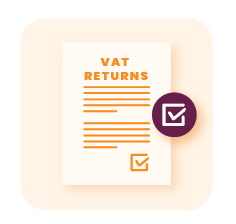Poland- Intrastat / EC Sales list
To provide essential data on trade between EU Member States, a system was needed to monitor transactions between businesses located within a country and those trading with other countries in the EU. Intrastat is the system designed to gather and make available this type of information. It plays a crucial role in tracking and analyzing intra-community trade flows.
Selling in Poland?
ESL in Poland
Alongside the standard VAT return, several additional reports are necessary to meet EU regulations. Generally, reporting is required for sales within the European Union, but sometimes it’s necessary to report EU purchases as well. For intra-Community transactions of goods and services, the EC Sales and Purchases List return (ESPL) is mandatory in Poland, with no reporting threshold.
Key components of the Polish EC Sales List (ESL), in addition to the regular Polish VAT Return and Intrastat filings, include:
- Customer’s name.
- Customer’s EU VAT numbers.
- Country codes.
- Value of the reported transactions.
While Intrastat focuses solely on products for statistical purposes, the ESL also encompasses services, and it must be submitted by the 25th day of the following month.
Under the EU Directive’s reverse charge mechanism, VAT is not charged on intra-Community supplies if your customer is registered in the VIES (VAT Information Exchange System). In such cases, the VAT is effectively ‘paid’ or reported by the buyer, who is making an intra-Community purchase. To legitimately benefit from this exemption, your customer must have a valid EU VAT number registered in VIES.
SAF-T in Poland
SAF-T (Standard Audit File for Tax) is an international standard for electronically transmitting accounting data from businesses to tax authorities. In Poland, the Ministry of Finance mandates that all businesses operating within the country file VAT records electronically using the SAF-T JPK VAT file. This requirement applies to all Polish companies, including those without a physical office, necessitating the submission of the JPK VAT file and making electronic accounting information available.
Businesses must gather and convert all financial transaction data into electronic XML files. These files are then submitted to the tax authority either regularly or as required before an audit.
Key points about the Polish SAF-T JPK VAT filing include:
- It must be submitted electronically by the 25th of the month for the previous month, regardless of the taxpayer’s quarterly payment schedule.
- The data structure of the SAF-T JPK VAT file was revised in October 2020 to consolidate multiple reports into a single file, which now includes fields for a company’s VAT return.
- As of October 1, 2020, VAT-7 and VAT-7K declarations are exclusively submitted through the JPK VAT format.
- The new SAF-T structure categorizes goods and services along with group codes (GTU codes), requiring taxpayers to assign codes to specific transactions.
Advantages of the new structure:
- Eliminates the need for two files, two authorization signatures, two shipments, and waiting for two confirmations (UPO).
- Replaces various VAT files (VAT-7, VAT-7K, VAT-27, VAT-ZT, VAT-ZZ, and VAT-ZD), streamlining the tax return process.
- Reduces the number of tax inspections and proceedings.
- Enables automatic verification of VAT settlements for accuracy.
The JPK VAT file, containing the company’s VAT records for purchases and sales, is due monthly by the 25th day of the month following the reporting period.
Tax authorities may impose a fine of PLN 500 for each error in the SAF-T format. However, this fine can be waived if the taxpayer corrects the error within a specified deadline.
Last Updated: 24/01/2024
Disclaimer
The information provided by Global VAT Compliance B.V. on this webpage is intended for general informational purposes only. Global VAT Compliance B.V. is not responsible for the accuracy of the information on these pages, and cannot be held liable for claims or losses deriving from the use of this information. If you wish to receive VAT related information please contact our experts at support@gvc.tax








